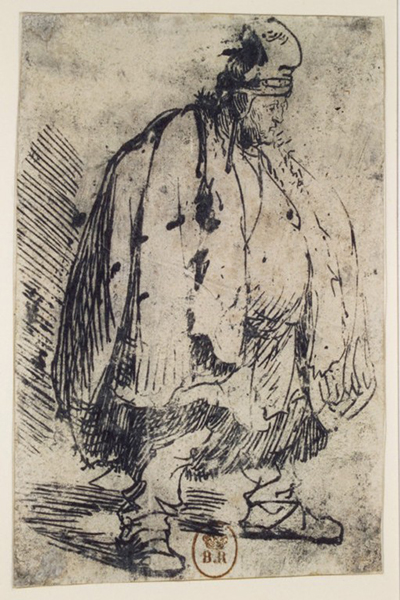This engraving was produced in circa 1628 but many series of prints have been created from it. Some of those have even been as recent as in the last few decades and can be found for sale online from all manner of sellers.
Rembrandt was highly interested in the lives of the poor and enjoyed depicting their lives, warts and all. He would even produce self portraits in which he had reduced himself down to the level of beggar and was not ashamed to be seen in this light. Detail was important to him and he would spot all manner of significant elements in the appearance of these individuals that others would certainly have missed. One of those would be in the boots that they wore, often heavily worn, perhaps even revealing several toes unwillingly.
Within the scene in front of us we see an uncomfortable looking man who sports a heavy looking cloak as he slowly makes his way through the day. His posture and shape does not suggest a healthy lifestyle and he appears to be aiming for survival rather than anything more. Rembrandt does not include quite as much detail here as in some of his more famous etchings, though, settling on the suggestion of form in some parts of the artwork. The only intensity can be seen in the shadows created by this portly figure, which are formed by series of close, parallel lines.
If we peruse the outfit on show, it appears likely that this man was homeless. His considerable amount of clothing would have never designed to get him through the cold nights without any type of shelter. It is important that people such as these were featured within art as otherwise they would have been essentially airbrushed from history, as if deemed unsuitable even for existence. During the 17th century most artists would have concentrated on the rich and famous, drawn by the glamour as well as the more generous commissions. Rembrandt, however, forget his own path.




